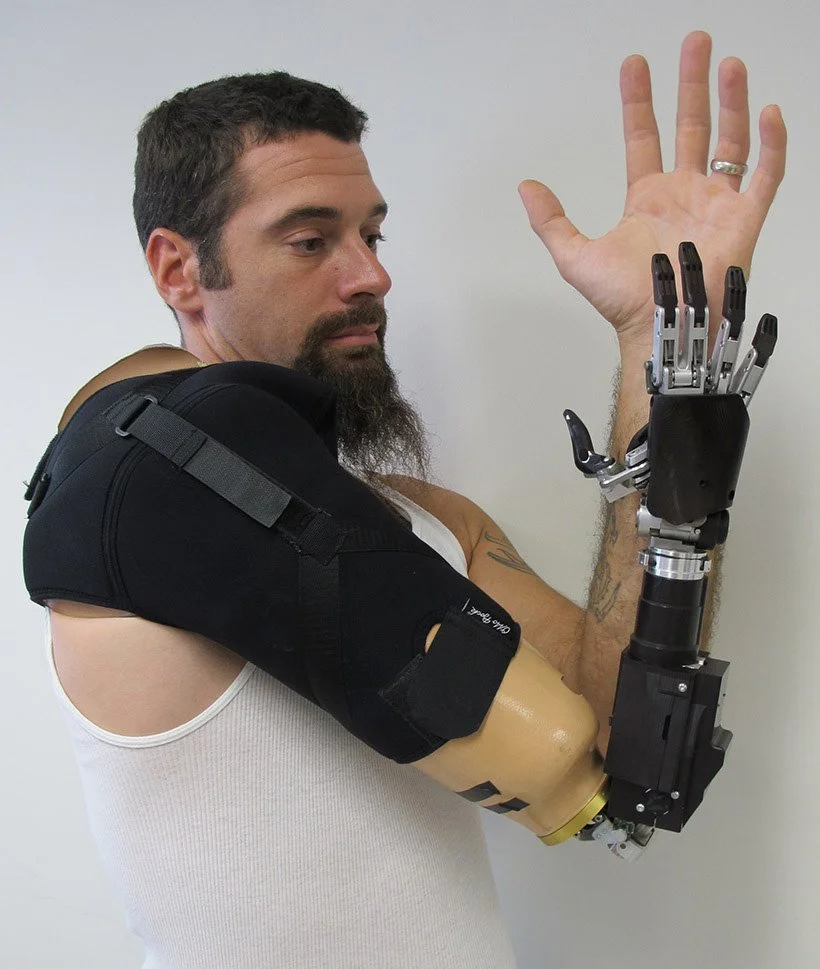5DOF Robotic Myoeletric Prosthetic ArmEmployer: Shirley Ryan AbilityLab | RIC
Role: Research Engineer III
This project was motivated by the desire to understand the needs of people who reject the use of a prosthesis. While traditional users wanted more strength or speed, manufacturers were not satisfying the untapped market. Through our research we discovered:
It doesn’t matter how strong the device is if it is not being worn.
The device should weigh less than the anatomical counterpart. It is not attached via bone or connective tissue, so the user experiences the weight of the device differently than their anatomical limb.
Available devices are too large. Commercial devices were designed for the 50th percentile male which is too large for ~72% of adults. Not only is this bulky and burdensome, but it removes visual symmetry. It becomes obvious that the user is wearing a device.
Dexterity is lacking. Commercial devices had a thumb that moved in prehension and no wrist flexion ability. We use our thumbs to locate and oppose grasps - our thumbs do not move in prehension. This design choice forces users to use more cognitive energy while grasping due to unnatural digit actuation.
Key Design Features:
Wrap around fingers which utilize an optimized 4-bar linkage design*
Independently controlled, non-backdriveable thumb which utilizes a single axis of rotation to accomplish 3 distinct grasping patterns*
Wrist flexion with dart thrower’s angle which allows users to better reach their midline, behaving more like the anatomical counterpart *
Universal, electromechanical quick disconnect which was the first of it’s kind with the ability to support passive and active rotation in a uniquely small package *
Wrist rotation. Coupled with our wrist flexion unit, this was the first 2DOF wrist available to users. This 2DOF wrist allows for 95% of anatomical motions and maneuvers.
Elbow flexion with biomimetic carrying angle which flexes towards the midline, allowing users to better perform activities of daily living
Design for the 25th percentile female in mass and size which covers ~87% of the population.
Matches other benchmarks in terms of speed and strength
State of the art pattern recognition control. This technology became the first spin out from the research group and is now Coapt
This project was the effort of a multi-disciplinary team of researchers, engineers, and clinicians. Items above shown with an asterisk (*) are projects where I was the lead design engineer.

